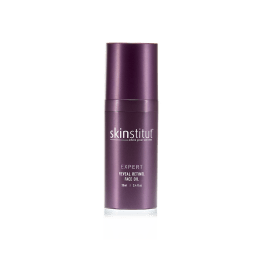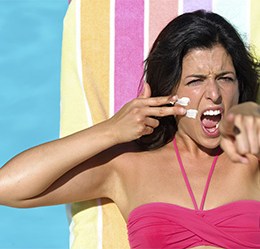
The dietary sugar backlash grows daily, with the World Health Organisation firing a dire warning last year that ‘sugar is the new tobacco’, just as addictive and with as many potential adverse health effects.
Eating too much and the wrong kind of sugar (fructose) is blamed for causing everything from obesity to insulin resistance and diabetes, non-alcoholic fatty liver disease, high cholesterol and heart disease.
But wait, there’s more! Did you know that a by-product of sugar – a process known as glycation – is argued to be the Number 1 cause of intrinsic (systemic) skin ageing?
‘Glycation is a natural chemical reaction that occurs in the body’ according to Paul Fister, managing director of Omniderm, and national training manager Sue Dann, distributors for Dr. Spiller Biomimetic skincare.
‘It transpires when `bad’ sugar molecules bind onto a protein (like collagen) or lipid. This process encourages destruction and free radical attack forming Advanced Glycation End products, or AGEs.
‘Similar to the caramelising action that occurs when onions are cooked at a high temperature, when sugar attacks protein within the skin, a negative transformation occurs.’
This manifests on the skin’s surface as dullness, loss of elasticity, sagging, and formation of quilted or criss-crossed wrinkles. By comparison, most static or `mimic’ lines follow only a horizontal or vertical direction.
‘Glycation damages skin proteins such as fibronectin, laminin, and particularly elastin and collagen by crosslinking them into an inflexible and complex network,’ explains Dr Florian Wolf, research director for the acclaimed Australian brand, Sin-Care.
‘In addition, glycation also causes a massive release of free radicals bringing about the deterioration of hyaluronic acid, an important part of skin’s intrinsic moisturising factor.
‘In young skin, glycated proteins are eliminated. However, skin ageing decreases the renewing capacity, thus causing a build-up of glycated proteins.
‘[These are] subsequently stored in the dermis and lead to inflammatory processes that, in a vicious cycle, destroy more of the remaining healthy collagen.’
Glycation can be linked directly to a diet filled with high GI (or Glycaemic Index) foods that create a rapid sugar spike followed by a rapid drop – for instance, lollies, soft drinks, white bread, white rice and refined sugar. Even watermelon and pumpkin!
A low GI diet delivers slow-release energy and fuel. Low GI foods include bran, oats, muesli, nuts, brown rice, peas, carrots, cauliflower and mushrooms.
But the latest buzz in skincare is topical products to combat glycation at a dermal level. ‘Anti-glycation topical solutions are the latest strategy in anti-ageing and are fast gaining ground in our industry,’ says Sin-Care founder Kimberley Pearson, whose contribution to the war effort is Sugar Hit serum.
It contains Archostaphylos Uva Ursi Leaf extract, which is rich in polyphenolic anti-oxidants and whose AGE-preventative effect has been scientifically proven. Uva Ursi Leaf also helps to even out the skin tone by inhibiting the production of melanin, thus resulting in a noticeable lightening effect.
Sugar Hit’s lychee extract contains oligonol, which helps reduce inflammation (thus decreases inflammation-induced skin ageing), reduce dark spots and inhibit AGEs formation.
Glyogen, another Sugar Hit ingredient that is naturally present in cells, is one of the main energy sources for cell activity. This marine-based active enhances energy reserves, helps reactivate the cells’ capacity to repair while at the same time reinforces epidermal defence and increases moisture retention.
Say Omniderm’s Paul Fister and Sue Dann: ‘As AGEs produced by glycation are potent free radicals, the topical application of powerful antioxidants can assist in arming the skin with increased defence. Vitamins E, C, A and co-enzyme Q10 are some of the most effective fighters of this oxidative destruction.
‘Botanicals such as green tea and aloe vera are rich in antioxidant polyphenols, flavonoids and tannins. These are the same chemicals that contribute to the natural defence mechanism of plants against the environment.
‘These ingredients are to be found in the Dr Spiller Vitamin C-Plus range including a serum, day and night cream. For environmentally sensitised and reactive conditions, the Sanvita Gel, Cream and Mask contain powerful antioxidants such as green tea, pomegranate and ginseng to neutralise the effects of oxidative stress.’
Germaine De Capuccini has introduced the Timexpert C+ (A.G.E) Anti-Glycation Facial, which it says is the first of its kind on the market. The 60-minute treatment is based on pure Vitamin C combined with ume extract (a type of Japanese plum containing twice as many proteins and minerals than any other frui)t, which works to inhibit the action of glycation. One treatment provides an immediate, intense luminosity, and 4 x weekly treatments provide a lasting revitalising effect. Results can be maintained with regular home use of the Timexpert C+ (A.G.E) cream.
www.germaine-de-capuccini.com.au
* This article first appeared in Spa Australasia Volume 57, Page 108




